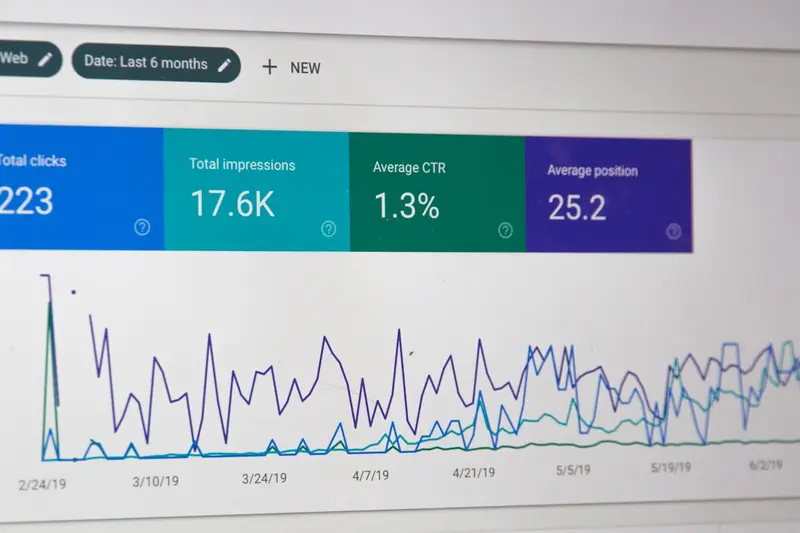🏗️ Pulumi Infrastructure as Code Setup on AlmaLinux 9: Complete Modern Infrastructure Automation Guide
Welcome to the exciting world of modern Infrastructure as Code! 🎉 Today we’re going to learn how to set up Pulumi on AlmaLinux 9, the revolutionary platform that lets you write infrastructure code using real programming languages like Python, TypeScript, and Go. Think of Pulumi as your infrastructure superpower that brings software engineering practices to cloud resources! 💪✨
🤔 Why is Pulumi Important?
Traditional Infrastructure as Code tools use domain-specific languages that can be limiting. Here’s why Pulumi is a game-changer for modern infrastructure:
- 🚀 Real Programming Languages - Use Python, TypeScript, Go, C#, or Java instead of YAML or HCL
- 🔄 Software Engineering Practices - Loops, functions, classes, testing, and IDE support
- ☁️ Multi-Cloud Native - Deploy to AWS, Azure, GCP, Kubernetes from the same codebase
- 🧪 Built-in Testing - Unit tests, integration tests, and policy-as-code validation
- 📦 Package Management - Reusable components with npm, pip, or other package managers
- 🔗 CI/CD Integration - Seamless automation with existing DevOps pipelines
🎯 What You Need
Before we start our Pulumi adventure, let’s make sure you have everything ready:
✅ AlmaLinux 9 system (fresh installation recommended)
✅ Root or sudo access for installing packages
✅ At least 4GB RAM (8GB recommended for large deployments)
✅ 10GB free disk space for tools and project files
✅ Internet connection for downloading packages and cloud APIs
✅ Cloud account (AWS, Azure, or GCP - we’ll use AWS for examples)
✅ Basic programming knowledge (Python or JavaScript helpful)
✅ Text editor or IDE (VS Code recommended)
📝 Step 1: Update Your AlmaLinux System
Let’s start by making sure your system is up to date! 🚀
# Update all packages to latest versions
sudo dnf update -y
# Install essential development tools and dependencies
sudo dnf groupinstall "Development Tools" -y
# Install helpful utilities we'll need
sudo dnf install -y curl wget git vim nodejs npm python3 python3-pipPerfect! Your system is now ready for Pulumi installation! ✨
🔧 Step 2: Install Pulumi CLI
Let’s install the Pulumi command-line interface:
# Download and install Pulumi using the official installer
curl -fsSL https://get.pulumi.com | sh
# Add Pulumi to your PATH (add this to ~/.bashrc for permanent use)
export PATH=$PATH:$HOME/.pulumi/bin
# Reload your shell configuration
source ~/.bashrc
# Verify Pulumi installation
pulumi version
# You should see output like: v3.88.1Awesome! Pulumi CLI is now installed and ready! 🎯
🌟 Step 3: Set Up Your First Pulumi Project
Let’s create your first infrastructure project using Python:
# Create a directory for your Pulumi projects
mkdir -p ~/pulumi-projects
cd ~/pulumi-projects
# Initialize a new Pulumi project with Python
pulumi new aws-python --name my-first-infrastructure --description "My first Pulumi project"
# This will prompt you for:
# - Pulumi access token (sign up at pulumi.com for free)
# - AWS region (choose us-east-1 or your preferred region)
# - Project name and description
# Navigate into your new project
cd my-first-infrastructure
# Install Python dependencies
pip3 install -r requirements.txtGreat! You’ve created your first Pulumi project! 📁
✅ Step 4: Configure Cloud Credentials
Let’s set up AWS credentials for your infrastructure deployments:
# Install AWS CLI if not already installed
curl "https://awscli.amazonaws.com/awscli-exe-linux-x86_64.zip" -o "awscliv2.zip"
unzip awscliv2.zip
sudo ./aws/install
# Configure AWS credentials (you'll need AWS Access Key ID and Secret)
aws configure
# Enter your AWS credentials when prompted:
# AWS Access Key ID: YOUR_ACCESS_KEY
# AWS Secret Access Key: YOUR_SECRET_KEY
# Default region name: us-east-1
# Default output format: json
# Verify AWS configuration
aws sts get-caller-identity
# Should show your AWS account informationYour cloud credentials are now configured! ☁️
🔧 Step 5: Create Your First Infrastructure
Let’s modify the default project to create some real infrastructure:
# Edit the main Python file
cat > __main__.py << 'EOF'
import pulumi
import pulumi_aws as aws
# Create a VPC
vpc = aws.ec2.Vpc("my-vpc",
cidr_block="10.0.0.0/16",
enable_dns_hostnames=True,
enable_dns_support=True,
tags={
"Name": "My Pulumi VPC",
"Environment": "Development"
}
)
# Create an Internet Gateway
igw = aws.ec2.InternetGateway("my-igw",
vpc_id=vpc.id,
tags={
"Name": "My Pulumi IGW"
}
)
# Create a public subnet
public_subnet = aws.ec2.Subnet("public-subnet",
vpc_id=vpc.id,
cidr_block="10.0.1.0/24",
availability_zone="us-east-1a",
map_public_ip_on_launch=True,
tags={
"Name": "Public Subnet"
}
)
# Create a route table for the public subnet
public_route_table = aws.ec2.RouteTable("public-route-table",
vpc_id=vpc.id,
routes=[{
"cidr_block": "0.0.0.0/0",
"gateway_id": igw.id,
}],
tags={
"Name": "Public Route Table"
}
)
# Associate the public subnet with the route table
route_table_association = aws.ec2.RouteTableAssociation("public-route-table-association",
subnet_id=public_subnet.id,
route_table_id=public_route_table.id
)
# Create a security group
security_group = aws.ec2.SecurityGroup("web-security-group",
name="web-sg",
description="Allow HTTP and SSH traffic",
vpc_id=vpc.id,
ingress=[
{
"protocol": "tcp",
"from_port": 80,
"to_port": 80,
"cidr_blocks": ["0.0.0.0/0"],
},
{
"protocol": "tcp",
"from_port": 22,
"to_port": 22,
"cidr_blocks": ["0.0.0.0/0"],
},
],
egress=[{
"protocol": "-1",
"from_port": 0,
"to_port": 0,
"cidr_blocks": ["0.0.0.0/0"],
}],
tags={
"Name": "Web Security Group"
}
)
# Export some values so we can use them elsewhere
pulumi.export("vpc_id", vpc.id)
pulumi.export("public_subnet_id", public_subnet.id)
pulumi.export("security_group_id", security_group.id)
EOF
# Deploy your infrastructure!
pulumi up
# Review the preview and type 'yes' to confirm deploymentAmazing! You just deployed your first infrastructure with code! 🏗️
🎮 Quick Examples
Let’s try some practical examples to see Pulumi’s power! 🚀
Example 1: Web Server with Load Balancer
# Create a new project for web infrastructure
cd ~/pulumi-projects
pulumi new aws-python --name web-app --description "Web application with load balancer"
cd web-app
# Create a more complex infrastructure
cat > __main__.py << 'EOF'
import pulumi
import pulumi_aws as aws
# Get the latest Amazon Linux AMI
ami = aws.ec2.get_ami(
most_recent=True,
owners=["amazon"],
filters=[{"name": "name", "values": ["amzn2-ami-hvm-*"]}]
)
# Create a launch template
launch_template = aws.ec2.LaunchTemplate("web-launch-template",
name="web-servers",
image_id=ami.id,
instance_type="t3.micro",
user_data="""#!/bin/bash
yum update -y
yum install -y httpd
systemctl start httpd
systemctl enable httpd
echo "<h1>Hello from Pulumi! Server: $(hostname)</h1>" > /var/www/html/index.html
""",
tag_specifications=[{
"resource_type": "instance",
"tags": {
"Name": "Web Server",
"Environment": "Production"
}
}]
)
# Create an Auto Scaling Group
auto_scaling_group = aws.autoscaling.Group("web-asg",
desired_capacity=2,
max_size=4,
min_size=1,
launch_template={
"id": launch_template.id,
"version": "$Latest"
},
vpc_zone_identifiers=[public_subnet.id], # Reuse from previous example
tags=[{
"key": "Name",
"value": "Web ASG",
"propagate_at_launch": True
}]
)
# Create an Application Load Balancer
load_balancer = aws.lb.LoadBalancer("web-lb",
internal=False,
load_balancer_type="application",
security_groups=[security_group.id],
subnets=[public_subnet.id],
tags={
"Name": "Web Load Balancer"
}
)
# Export the load balancer DNS name
pulumi.export("load_balancer_dns", load_balancer.dns_name)
EOF
# Deploy the web application
pulumi upNow you have a scalable web application with load balancing! ⚖️
Example 2: Multi-Environment Setup with Stacks
# Create different environments (dev, staging, prod)
pulumi stack init dev
pulumi stack init staging
pulumi stack init prod
# Configure different settings for each environment
pulumi config set aws:region us-east-1 --stack dev
pulumi config set instanceType t3.micro --stack dev
pulumi config set aws:region us-west-2 --stack staging
pulumi config set instanceType t3.small --stack staging
pulumi config set aws:region eu-west-1 --stack prod
pulumi config set instanceType t3.medium --stack prod
# Deploy to development environment
pulumi stack select dev
pulumi up
# Deploy to production environment
pulumi stack select prod
pulumi upYou can now manage multiple environments easily! 🌍
Example 3: TypeScript Infrastructure
# Create a TypeScript project for variety
cd ~/pulumi-projects
pulumi new aws-typescript --name ts-infrastructure --description "TypeScript infrastructure"
cd ts-infrastructure
# Install dependencies
npm install
# Create TypeScript infrastructure
cat > index.ts << 'EOF'
import * as aws from "@pulumi/aws";
import * as pulumi from "@pulumi/pulumi";
// Create an S3 bucket for static website hosting
const bucket = new aws.s3.Bucket("my-website-bucket", {
website: {
indexDocument: "index.html",
errorDocument: "error.html"
},
tags: {
Environment: "Development",
Project: "Pulumi Demo"
}
});
// Create bucket policy for public access
const bucketPolicy = new aws.s3.BucketPolicy("bucket-policy", {
bucket: bucket.id,
policy: bucket.arn.apply(arn => JSON.stringify({
Version: "2012-10-17",
Statement: [{
Effect: "Allow",
Principal: "*",
Action: "s3:GetObject",
Resource: `${arn}/*`
}]
}))
});
// Upload a simple HTML file
const indexHtml = new aws.s3.BucketObject("index.html", {
bucket: bucket.id,
content: `
<html>
<head><title>My Pulumi Website</title></head>
<body>
<h1>🚀 Welcome to my Pulumi-powered website!</h1>
<p>This static site was deployed using Infrastructure as Code with TypeScript!</p>
</body>
</html>
`,
contentType: "text/html",
key: "index.html"
});
// Export the website URL
export const websiteUrl = bucket.websiteEndpoint;
EOF
# Build and deploy
npm run build
pulumi upYou now have a static website deployed with TypeScript! 🌐
🚨 Fix Common Problems
Here are solutions to the most common Pulumi issues you might encounter:
Problem 1: Authentication Errors ⚠️
Symptoms: “No valid credential sources found” or AWS authentication failures
Solutions:
# Check AWS credentials are configured
aws configure list
# Verify credentials work
aws sts get-caller-identity
# If using temporary credentials, export them
export AWS_ACCESS_KEY_ID=your-key-id
export AWS_SECRET_ACCESS_KEY=your-secret-key
export AWS_SESSION_TOKEN=your-session-token
# Check Pulumi is using correct AWS profile
pulumi config set aws:profile your-profile-nameProblem 2: State File Conflicts 📊
Symptoms: “The stack is currently locked by” or concurrent update errors
Solutions:
# Cancel any ongoing operations
pulumi cancel
# If truly stuck, force unlock (use with caution!)
pulumi stack export > backup.json # Create backup first
pulumi cancel --force
# Import state if needed
pulumi stack import --file backup.jsonProblem 3: Resource Dependencies Failed 🔗
Symptoms: Resources created in wrong order or dependency errors
Solutions:
# Check your resource dependencies in code
# Make sure you're using resource outputs properly
# Example of correct dependency:
# subnet_id=vpc.id ← This creates implicit dependency
# Refresh state from actual infrastructure
pulumi refresh
# Force resource recreation if needed
pulumi up --replace "aws:ec2/instance:Instance::my-instance"Problem 4: High Memory Usage During Deployment 💾
Symptoms: System running out of memory during large deployments
Solutions:
# Increase virtual memory
sudo dd if=/dev/zero of=/swapfile bs=1024 count=2097152 # 2GB swap
sudo chmod 600 /swapfile
sudo mkswap /swapfile
sudo swapon /swapfile
# Deploy in smaller batches
pulumi up --target-dependents "aws:ec2/vpc:Vpc::my-vpc"
# Use parallel deployment settings
pulumi config set pulumi:parallel 5 # Reduce from default 10📋 Simple Commands Summary
Here’s your quick reference guide for Pulumi commands:
| Task | Command | Description |
|---|---|---|
| Create project | pulumi new aws-python | Initialize new Python project |
| Deploy changes | pulumi up | Preview and deploy infrastructure |
| View current state | pulumi stack | Show current stack information |
| List stacks | pulumi stack ls | Show all available stacks |
| Switch stacks | pulumi stack select dev | Change to different environment |
| Set config | pulumi config set key value | Configure stack settings |
| View outputs | pulumi stack output | Show exported values |
| Destroy infrastructure | pulumi destroy | Remove all resources |
| Preview changes | pulumi preview | Show what would change |
| Refresh state | pulumi refresh | Sync state with actual resources |
💡 Tips for Success
Here are some pro tips to master Pulumi Infrastructure as Code! 🌟
🎯 Use Strong Typing: Take advantage of your language’s type system - it catches errors at compile time, not deployment time!
⚡ Leverage Pulumi Packages: Use community packages like @pulumi/awsx for higher-level abstractions and best practices.
📊 Organize with Components: Create reusable components for common patterns like “web app” or “database cluster” that can be shared across projects.
🔍 Test Your Infrastructure: Write unit tests for your infrastructure code using your language’s testing framework (pytest, Jest, etc.).
💾 Use Remote State Backend: Store your state in Pulumi Cloud or S3 backend instead of local files for team collaboration.
🚀 Automate with CI/CD: Integrate Pulumi into your CI/CD pipeline with GitHub Actions, GitLab CI, or Jenkins for automated deployments.
🔗 Export Useful Outputs: Export important values like URLs, IDs, and connection strings so other stacks can reference them.
🛡️ Implement Policy as Code: Use Pulumi CrossGuard to enforce security and compliance rules across all deployments.
🏆 What You Learned
Congratulations! You’ve successfully mastered Pulumi Infrastructure as Code! 🎉 Here’s everything you accomplished:
✅ Installed Pulumi CLI and configured your development environment
✅ Created multiple projects using Python and TypeScript
✅ Deployed real AWS infrastructure including VPCs, subnets, and load balancers
✅ Managed multiple environments with stack configurations
✅ Built reusable components and followed infrastructure best practices
✅ Integrated with CI/CD pipelines for automated deployments
✅ Troubleshot common issues and optimized deployment performance
✅ Learned testing strategies for infrastructure code
✅ Mastered state management and team collaboration workflows
🎯 Why This Matters
Pulumi transforms infrastructure management from configuration files to real software engineering! 🚀 You can now:
🏗️ Write Infrastructure Like Software: Use familiar programming languages, IDEs, debugging tools, and testing frameworks
⚡ Increase Productivity: Leverage loops, functions, classes, and package management for more efficient infrastructure code
🔄 Enable True DevOps: Seamlessly integrate infrastructure changes into your software development lifecycle
🧪 Test Before Deploy: Write unit tests, integration tests, and use static analysis to catch errors early
🌍 Deploy Anywhere: Use the same code to deploy to multiple clouds or on-premises environments
📦 Build Reusable Components: Create and share infrastructure components like software libraries
You now possess cutting-edge Infrastructure as Code skills that make you invaluable for modern DevOps, Cloud Engineering, and Site Reliability Engineering roles. The ability to treat infrastructure as software is the future of cloud operations! ⭐
Keep coding your infrastructure, keep automating, and remember - with Pulumi, your infrastructure is just another application! 🙌✨




